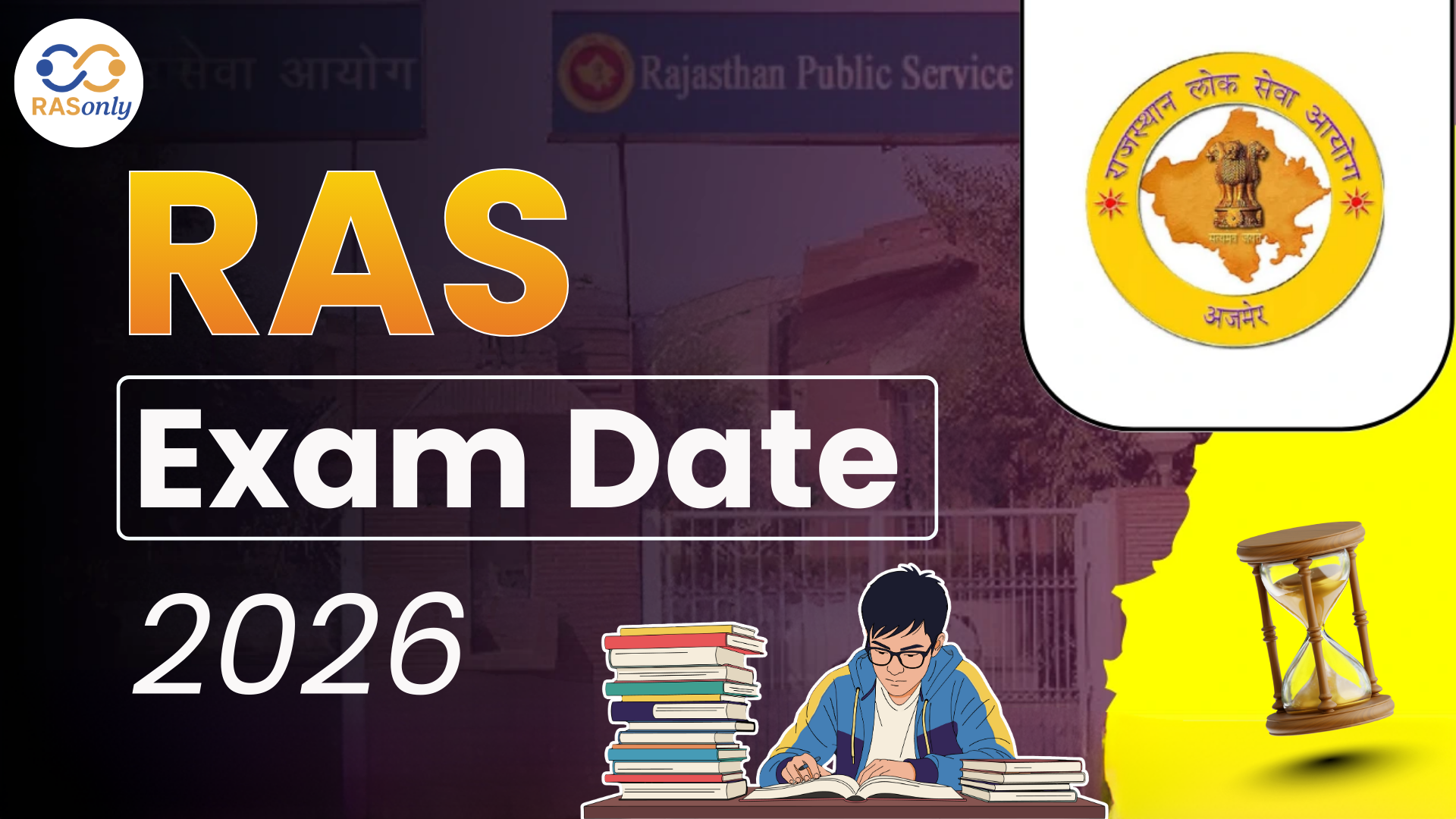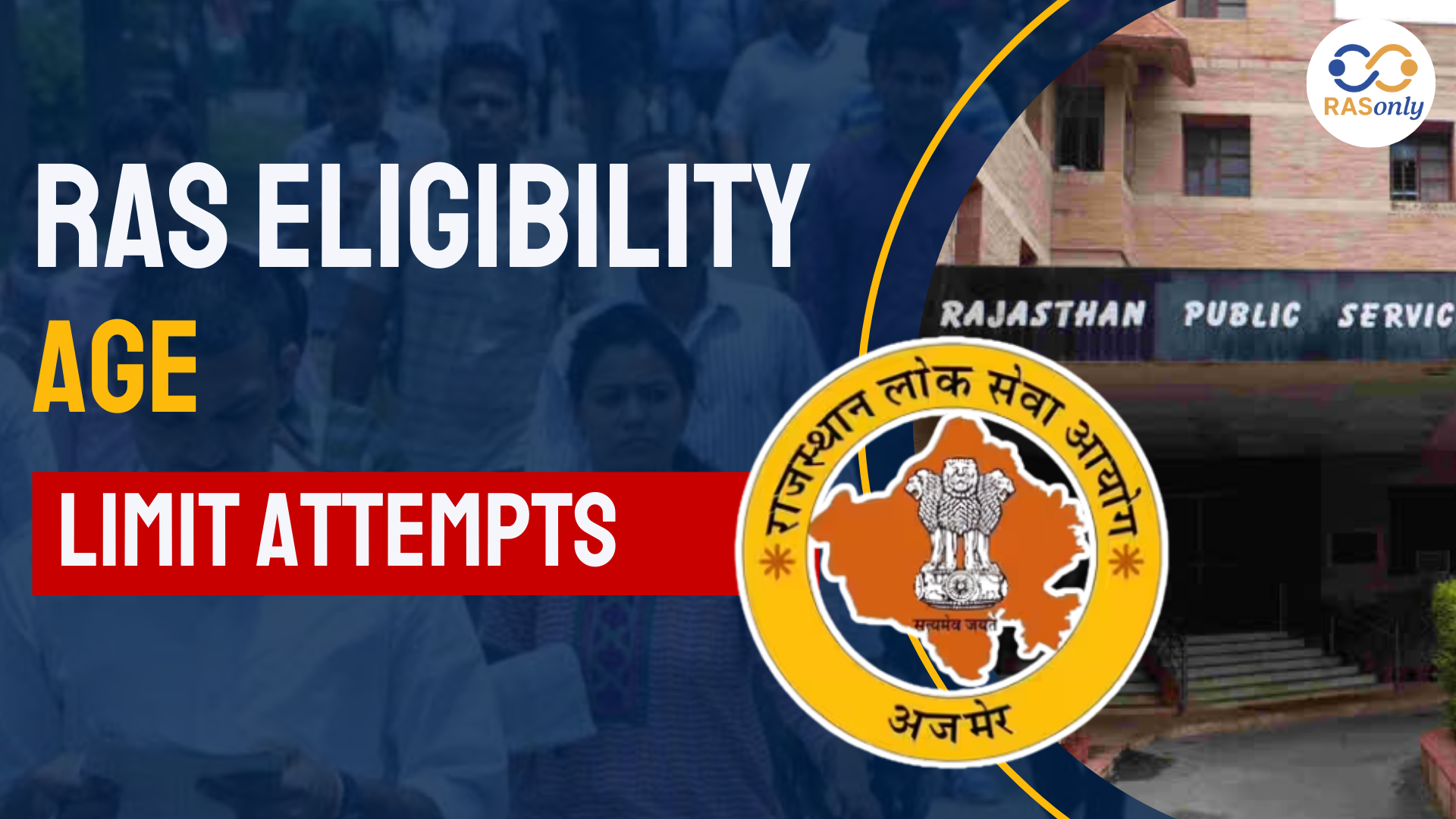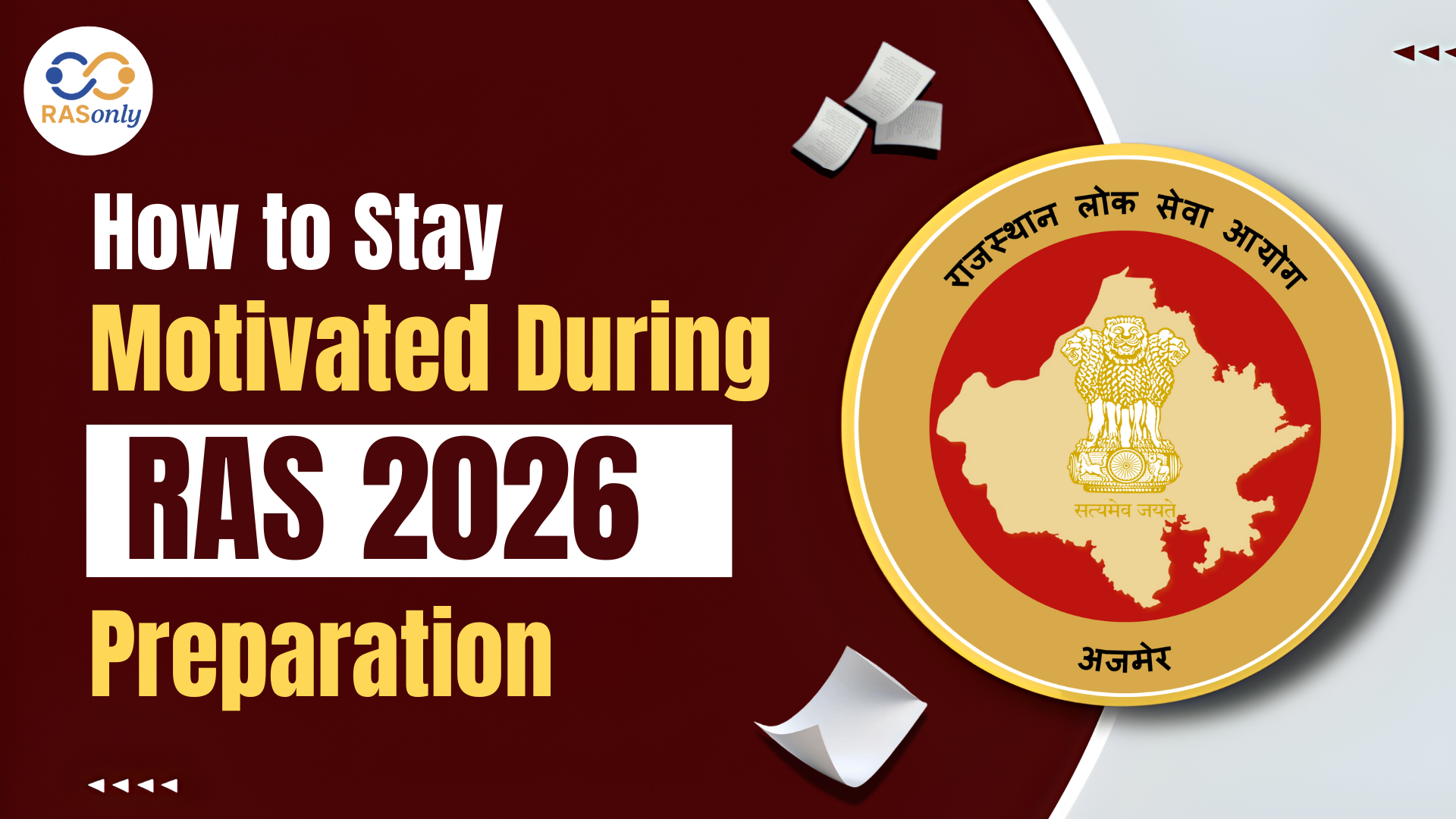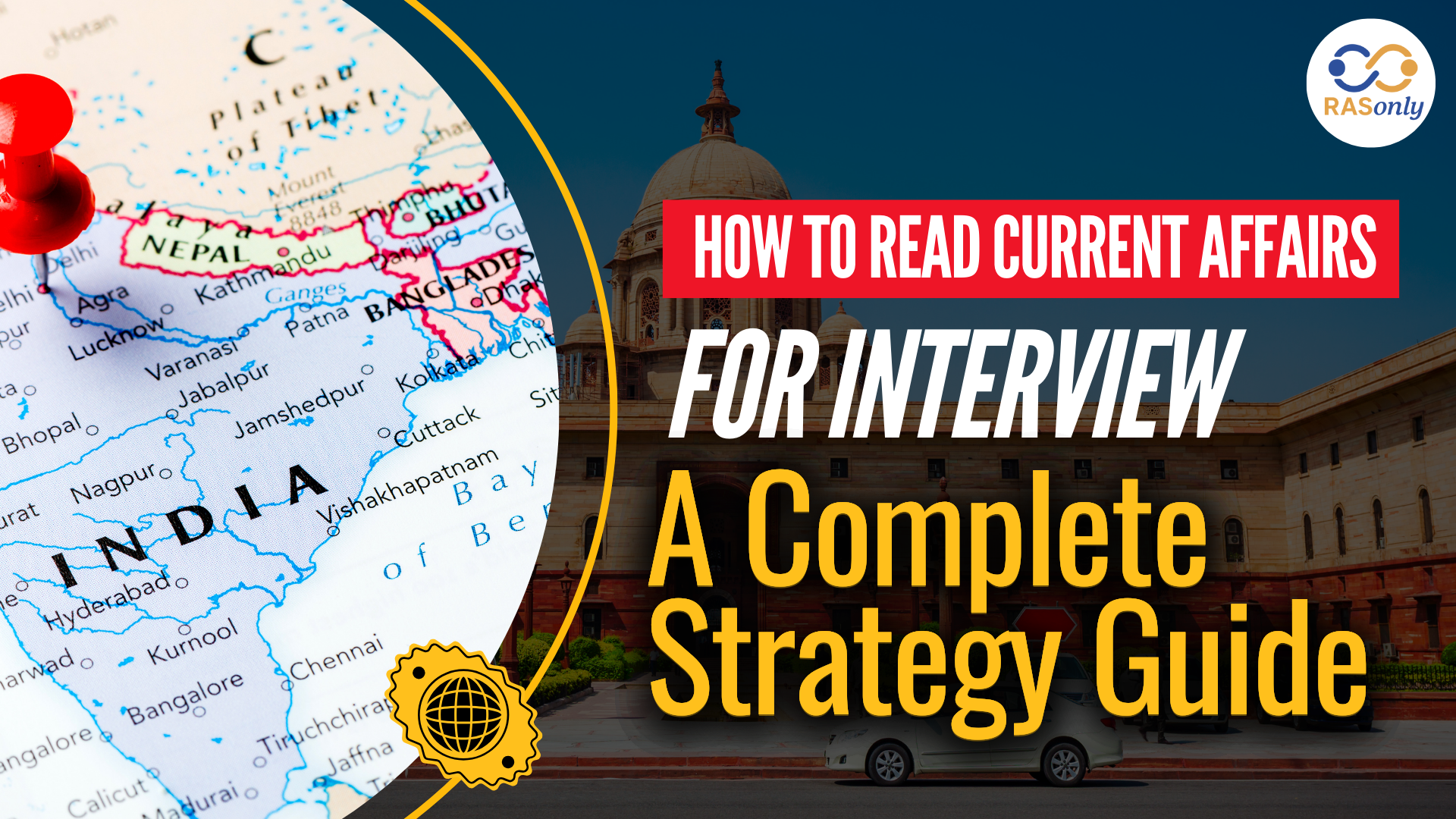RAS Exam Date 2026 for Notification, Prelims, Mains Date
- >
- RAS Preparation Resources
- >
- Religious Movements in Ancient India
Religious Movements in Ancient India

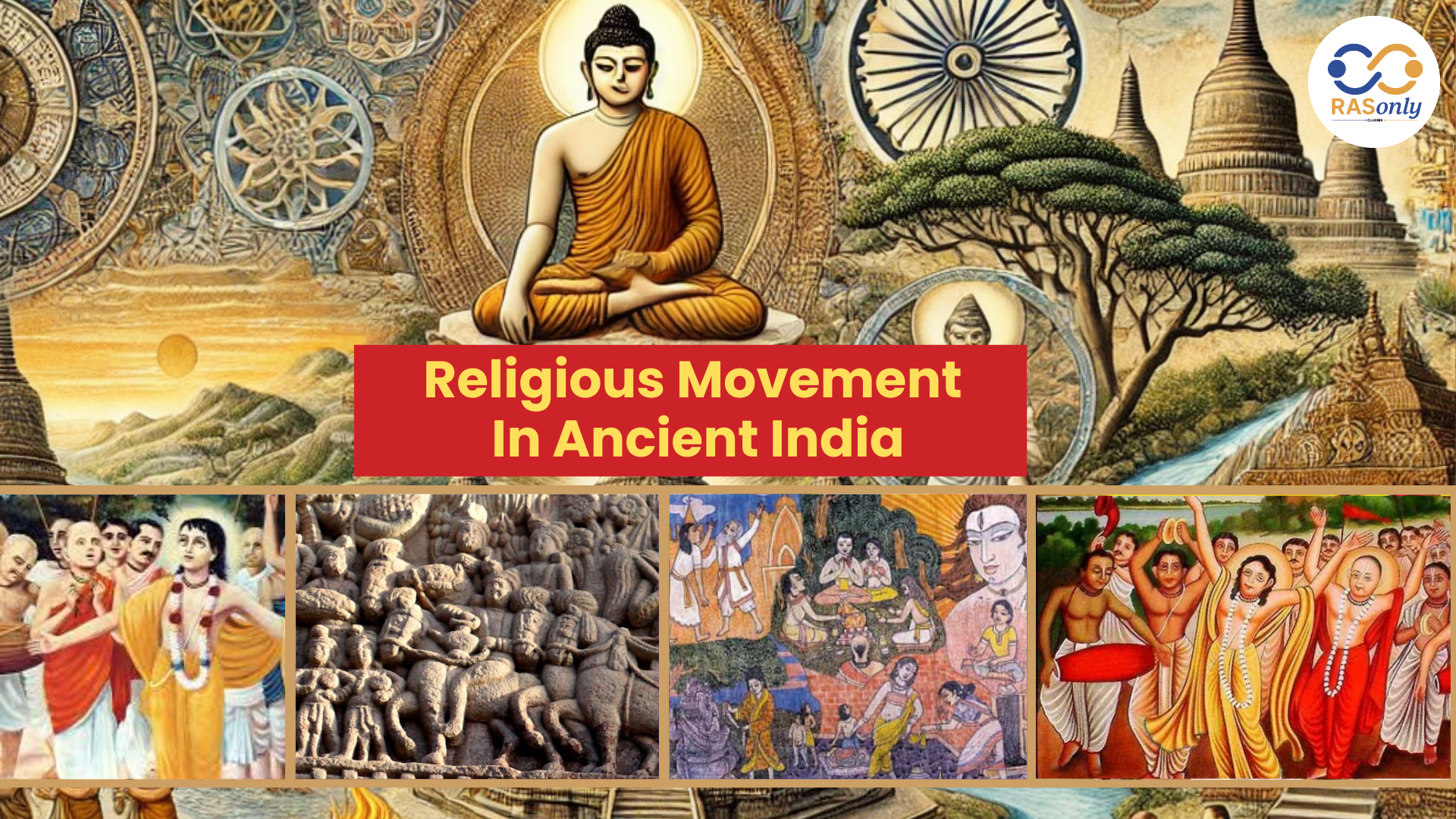
The religious and philosophical thought in ancient India was highly diverse having evolved through Vedic ritual to the devotional Bhakti form. These movements helped to develop the ethical standards, social forms, art, and cultural manifestations. They also formed the basis of the spiritual pluralistic heritage of India.
Key Highlights for RAS Mains
I. Brahmanism and Vedic Religion
- The Vedic Period (1500 BCE 500 BCE)
- Textual Sources: Four Vedas -Rigveda, Samaveda, Yajurveda, Atharvaveda.
- Core Practices: Yajnas (sacrifices), hymns and cosmic rituals conducted by Brahmins.
- Social Order: based on the system of Varna Brahmins, Kshatriyas, Vaishyas, Shudras.
- Aim: Preservation of cosmic order (Rta) by actions and sacrifices in honor of the god of nature (Indra, Agni, Varuna).
- Brahmanism transition
- It surfaced as a more ceremonial and stratified era.
- Brahmanas and Aranyakas: Works offering interpretations of complicated sacrifice performances and universe symbolism.
- Strictened the aspects of Brahmins and institutionalized religious practices.
- Led to the emergence of Upanishadic thought, then ritualism stressed metaphysics and philosophy.
II. Jainism
- Overview
- Founder: Vardhamana Mahavira (6 th Century BC)
- Jain tradition states that he was the 24 th Tirthankara.
- Propagated asceticism, non violence (Ahimsa) and renunciation.
- Core Principles
- Ahimsa: Freedom from violence of thought, word and action.
- Anekantavada: Non absolutism- accepting two truths.
- Aparigraha: Non-desire to possess any objects.
- Karma and Moksha: Emancipation in self discipline and austerity.
- Impact
- It encouraged ethical behavior, vegetarianism and compassion.
- Influenced trade communities and helped to bring religious tolerance in India.
III. Buddhism
- Overview
- Founder: Siddhartha Gautama (Buddha) 6th Century BCE
- Abandoned a life of princely ease as freedom of pain.
- Became enlightened on the Bodhi tree at Bodh Gaya.
- Key Doctrine:
- Four Noble Truths:
- Life is suffering (Dukkha)
- Cause is desire (Samudaya)
- Cessation is possible (Nirodh)
- Path to cessation – Eightfold Path
- Eight fold path
- Eightfold Path:
- Right View,
- Right Intention,
- Right Speech,
- Right Action,
- Right Livelihood,
- Right Effort,
- Right Mindfulness,
- Right Concentration
- Eightfold Path:
- Ethical Teachings
- Care, awareness, and ethical existence (Five Precepts).
- Cast and ritualistic supremacy rejection.
- Spread and legacy
- Emperor Ashoka favoured it.
- Developed an enormous system of monasteries (Sangha).
- Huge impact on Indian art, architecture (stupas, pillars) and literature.
IV. Heterodox Schools
- Ajivikas
- Founder: Makkhali Gosala
- Faith: Niyati (absolute determinism) fate rules over everything in life.
- The stern asceticism; lost favor later because of its unpopularity.
- Charvakas (Lokayata)
- Atheism and atheistic philosophy.
- Denied Vedas, afterlife, and karma, and rituals.
- Encouraged the direct perception (pratyaksha) as the sole legitimate mental source of knowledge.
- Pushed happiness and fun (hedonism) as the aims of life
V. Bhakti Movement (7th Century)
Core Features
- Gave preference to personal devotion; (bhakti) rather than rituals or caste.
- Stressed the commitment and submission to an individual deity.
- Various saints would preach in vernacular.
Notable Saints
|
Region |
Saints |
Deity Focus |
|
South India |
Ramanuja, Alvars, Nayanars |
Vishnu, Shiva |
|
North India |
Kabir, Tulsidas, Mirabai |
Rama, Krishna |
|
Maharashtra |
Namdev, Tukaram |
Vithoba |
Impact
- Liberated religion which was democratic and which equally admitted people of all castes and groups.
- Opposed the authority of priests and discrimination in a caste system.
- The literature influenced vernacular, music, as well as devotional arts.
VI. The Cults and Local Deities Role
- There were large numbers of regional cults that survived together with the mainstream.
- The village gods/ goddesses worship was incorporated into the wider religious framework.
- Added to syncretism of religion, and communal practices.
- Several local gods were incorporated into bigger Hindu gods over the years.
VII. Interactions and Syncretism
- Key Features
- Assimilation of Vedic, Buddhist, Jain, and folk-related beliefs.
- Known traditions, building forms, and thought conversations.
- The Indian intellectual life was fertilized by the debates between schools such as the Nyaya, Samkhya, Vedanta and Buddhism.
- The examples of Syncretism
- Introduction of Buddhist Stupa features into the Hindu temples.
- Mutual places of pilgrimage, festivals.
- The Bhakti and Sufi co-existence and mutual-influence.
VIII. Cultural and Ethical Posterity
- Architecture and Art
- Hindu: Temples Stupas (Buddhist) Monasteries (Jain).
- Religious statues, cave paintings (Ajanta, Ellora) and epigraphs.
- Philosophy and Literature
- Upanishads, Buddhism, Tripitaks, Jain Agamas, Bhakti poetry.
- During the period made donations to Sanskrit and local writing.
- Ethical Influence
- The Indian values of Ethics are entrenched in Ahimsa, Dharma, Karuna (compassion) and Truthfulness.
- Gandhian philosophy was an outcome of ancient ethics, which became modern movements.
Conclusion
Early religion in India, including the Vedic tradition with its liturgy, the rationalists, the Charvakas, the ascetic Jains and Buddhists and the more inclusive Bhakti movement, is evidence of the tolerance and the variety of Indian spiritual life. These currents did not only influence ancient Indian society but also had an impact on the current day off church activity, on ethical values and on the culture of modern man
Post Category
- RAS Salary
- Result
- RAS Admit Card
- RAS Job
- RAS Cutoff
- Preparation Tips
- RAS Answer Key
- RAS Exam Analysis
- RAS Syllabus
- RAS Previous Year Papers
- RPSC RAS Exam Pattern
- RAS Interview
- RAS Mains Exam Date
- RAS Vacancy
- RAS Test Series
- RAS Best Books
- RAS Preparation Resources
- RAS Coaching Centre
- History
- Polity
- Geography
- Economics
- Science
- Art and Culture
- RPSC RAS Application Form
- RPSC RAS Notification
RASonly Interview Guidance Program

Mr. Ashok Jain
Ex-Chief Secretary Govt of Rajasthan
- IAS officer of the 1981 batch, Rajasthan cadre.
- Passionate about mentoring the next generation of RAS officers with real-world insights.
- Got retired in Dec 2017 from the post of Chief Secretary of the state of Rajasthan.

Mr. Guru Charan Rai
Ex-ASP / SP in Jaisalmer
- Guru Charan Rai, IPS (Retd), retired as Inspector General of Police (Security), Rajasthan, Jaipur in 2017.
- Served as ASP and SP in Jaisalmer, Nagaur, Sri Ganganagar, Sawai Madhopur, Dausa, Sikar, and Karauli.
- He also held key positions as DIGP and IGP in the Law and Order division.

Mr. Rakesh Verma
Ex-IAS Officer, B.Tech, MBA, and M.A. (Economics)
- IAS officer of the 1981 batch and retired in Chief Secretary Rank.
- Civil servant of high repute and vast experience.
- Has been teaching UPSC CSE subjects for the last six years.
Related Post
👉🏻 Register Today to Join Classes! 👍🏻
- Team RASOnly -
🎯 Benefits of RASOnly Coaching:
- ✅ 1:1 Mentorship with RAS Officers
- ✅ Experienced and Expert Faculty
- ✅ Free Library Access
- ✅ Daily Minimum 4 Hours Must
- ✅ Comprehensive Study Material
- ✅ Regular Tests & Performance Analysis
- ✅ Personalized Guidance & Doubt Solving
- ✅ Online & Offline Class Options
- ✅ Affordable Fees with Quality Education
Key Highlights:
- 👉🏻 3-Day Refund Policy
- 👉🏻 New Batch Starting from 04 August
- 👉🏻 Registration Amount: Only ₹1000

